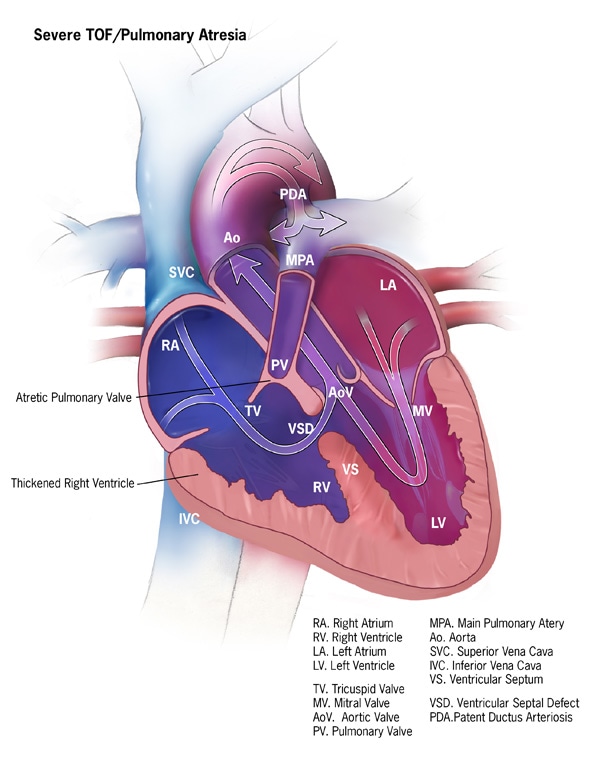Tetralogy of Fallot with Pulmonary Atresia (TOF/PA)
Jianhong Zhang, RDCS (AE, FE, PE)
Tetralogy of Fallot with pulmonary atresia (TOF/PA) is a severe variant of tetralogy of Fallot in which the pulmonary valve (the valve which leads from the right ventricle to the lungs is atretic and does not open.
The intracardiac anatomy consists of tetralogy of Fallot with a large conoventricular ventricular septal defect, an overriding aorta and anterior malalignment of the conal septum resulting in right ventricular outflow tract obstruction. The pulmonary valve is often absent with a muscular pouch in its place. Occasionally, it presents as a blind membrane. Flow to the lungs and branch pulmonary arteries may be supplied by a single patent ductus arteriosus, bilateral ducti or by major aortopulmonary artery collateral arteries (MAPCAs).
The spectrum of severity within these lesion which depends upon the anatomy of the pulmonary arteries. This can range from well-formed, confluent pulmonary artery branches to completely absent native pulmonary arteries. In the case of absent branch pulmonary arteries, flow to the lungs is provided by vessels called major aorto-pulmonary collateral arteries (MAPCA's), which arise from the aorta and provide vessels feeding all/some segments of the lungs.
The majority of cases fall somewhere in between these two ends of the spectrum, with the total pulmonary blood flow provided by a combination of diminutive native pulmonary arteries and multiple MAPCA's. Different segments of the lungs are fed by either a native pulmonary artery or a MAPCA, and sometimes by both, referred to as “dual supply”. Frequently these patients have underperfused lung segments with little or no flow from the native pulmonary arteries or the collateral circulation, referred to as arborization defects.
